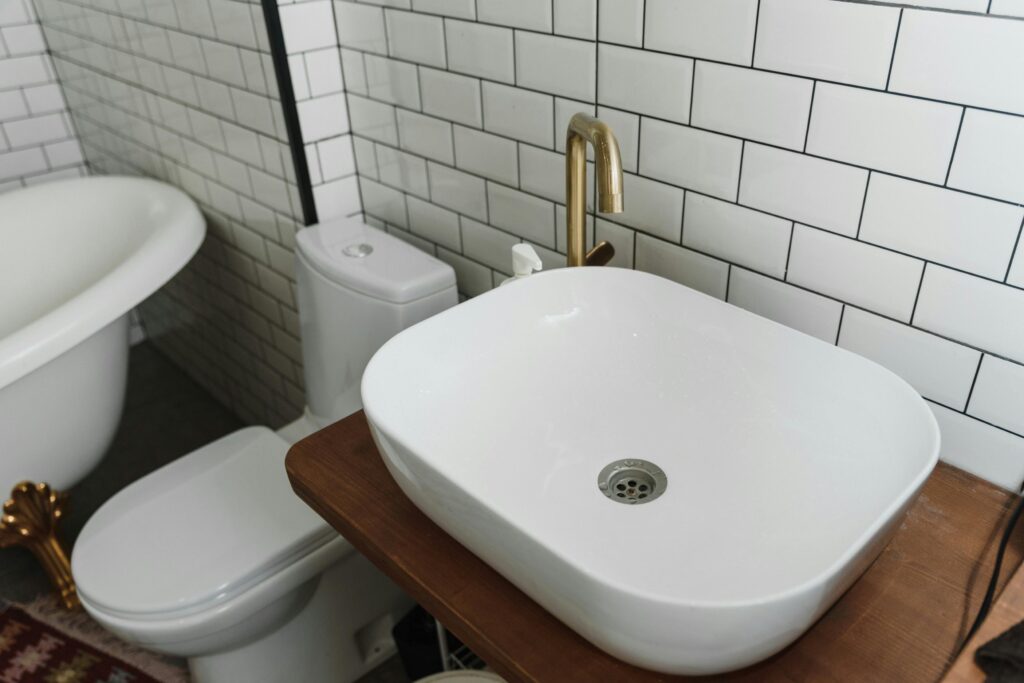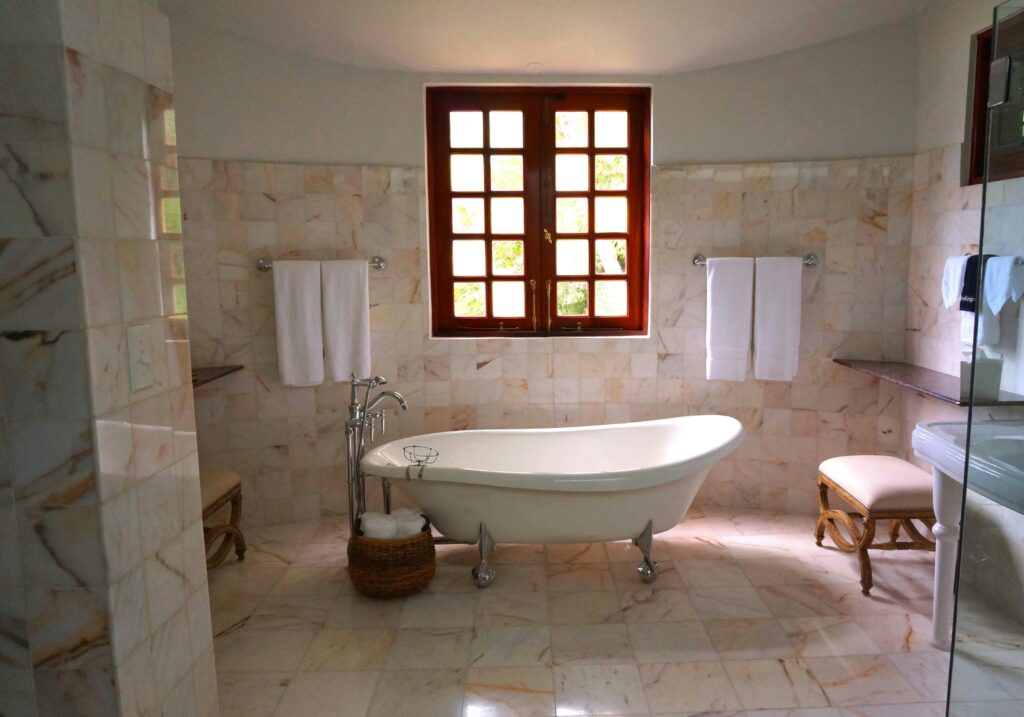Imagine stepping into a cramped, cluttered bathroom every morning, struggling to find space for your essentials, and feeling overwhelmed by the chaos. Now, picture instead walking into your dream bathroom, where every inch is thoughtfully designed to maximize space and enhance functionality. This transformation is not just a fantasy, it’s entirely achievable with the right approach to dream bathrooms space-maximizing & functional layouts.
In today’s world, where homes are becoming more compact, making the most out of your bathroom space is essential. Dream bathrooms space-maximizing & functional layouts go beyond aesthetics; they focus on smart design solutions that optimize every corner without compromising style or comfort. Whether you live in a small apartment or a cozy family home, mastering these layouts can dramatically improve your daily routines and elevate your home’s value.
In this article, you’ll discover innovative ideas and practical tips that turn cramped spaces into spacious sanctuaries. We’ll explore clever storage solutions, multifunctional fixtures, and design principles that bring harmony between space efficiency and beauty. By the end, you’ll be equipped with actionable insights to create your own dream bathrooms space-maximizing & functional layouts that meet your lifestyle needs while maintaining a high-end look.
Get ready to unlock the secrets of bathroom design that expertly blend space-saving techniques with luxurious function, transforming your bathroom from a simple utility room into a dream space that truly works for you.
Table of Contents
ToggleKey Takeaways
- Assess & Plan First: Measure your bathroom and list pain points to tailor a layout that fits your needs and space constraints.
- Prioritize Essential Fixtures: Wall-mounted sinks/toilets and corner or compact showers free up floor area and improve flow.
- Go Vertical: Tall cabinets, recessed niches, and wall-hung shelves maximize storage without crowding the floor.
- Harness Light & Color: Light neutrals, large mirrors, and layered lighting create an airy, spacious feel even in small bathrooms.
- Define Functional Zones: Create “wet” (shower/tub), “dry” (vanity/toilet), and storage zones for efficient, uncluttered movement.
- Choose Multifunctional Elements: Vanities with built-in hampers, heated towel racks, or fold-down seating boost utility without extra footprint.
- Tame Clutter: Hidden storage, medicine-cabinet mirrors, and multi-use furniture keep surfaces clear and the space serene.
- Mind the Details: Sliding/pocket doors, streamlined hardware, and strategic plumbing layouts further open up the room.
- Ergonomics & Comfort: Tailor heights and clearances to your household’s needs—good design is as much about ease of use as it is about looks.
- ROI & Daily Joy: Smart, space-saving layouts deliver up to 60% ROI on renos and turn cramped bathrooms into relaxing, functional retreats.
Why Dream Bathrooms Space-Maximizing & Functional Layouts Are More Important Than You Think
When it comes to home design, the bathroom is often underestimated despite being one of the most essential spaces in any household. A dream bathroom is no longer just about luxury fixtures or stylish decor; it’s about how efficiently the space is utilized. This is where Dream Bathrooms Space-Maximizing & Functional Layouts take center stage, combining aesthetics with purpose to create a sanctuary that’s both beautiful and practical.
But what exactly are space-maximizing & functional layouts? These layouts are carefully planned designs that make the most out of every square foot in a bathroom. The goal is to optimize movement, storage, and comfort while maintaining or enhancing the visual appeal. Whether your bathroom is a compact 35 square feet or a sprawling suite, smart layouts transform these spaces into dream bathrooms tailored perfectly to your lifestyle.
Why does this matter? According to a 2023 survey by the National Kitchen & Bath Association (NKBA), homeowners who invest in functional bathroom layouts see an average of 60% ROI (return on investment) on renovation projects. More importantly, 75% of respondents reported a significantly improved daily experience, citing convenience and reduced clutter as key benefits. This highlights a fundamental truth: a well-designed bathroom isn’t just an aesthetic upgrade, it elevates your day-to-day life.
Imagine Jane and Mark, a couple living in a small city apartment. Their bathroom was cramped, with barely enough room to move and limited storage, leading to daily frustration. After consulting with a designer specializing in Dream Bathrooms Space-Maximizing & Functional Layouts, they revamped their space by installing wall-mounted vanities, a pocket door, and vertical shelving. The result? A spacious, organized bathroom that feels twice its original size. Jane says, “It’s like having a mini spa at home, without adding a single inch to our space.”
In essence, Dream Bathrooms Space-Maximizing & Functional Layouts are crucial because they redefine how we interact with one of the most personal rooms in our homes. They address real pain points, lack of space, clutter, poor flow, while delivering a visually stunning and meaningful solution that enhances everyday living. As urban living spaces shrink and lifestyles get busier, the demand for these intelligent bathroom designs continues to surge, making them a must-know element of modern home improvement.
How to Create Dream Bathrooms Space-Maximizing & Functional Layouts Step by Step
Designing your dream bathroom with space-maximizing and functional layouts can transform an ordinary room into a serene sanctuary. Whether you’re working with a cramped powder room or a spacious master bath, optimizing every inch ensures comfort, style, and practicality. Follow this step-by-step guide to achieve the perfect balance between space efficiency and functionality in your dream bathroom.
Step 1: Assess Your Bathroom Space and Needs
Before diving into design ideas, take a detailed inventory of your current bathroom. Measure the dimensions carefully, noting architectural features like doors, windows, and plumbing connections. Ask yourself essential questions:
– Who uses the bathroom and how often?
– What are the current pain points in layout or storage?
– Do you need accommodations for mobility or children?
– What fixtures or styles do you prefer?
This initial assessment forms the foundation for an intelligent design that prioritizes your lifestyle while maximizing space.
Step 2: Prioritize Key Bathroom Fixtures with Space in Mind
The core of any bathroom layout revolves around essential fixtures: the toilet, sink(s), shower, and bathtub. To maximize space while maintaining function:
– Consider wall-mounted toilets and sinks to free up floor space and create a clean, airy feel.
– Opt for a walk-in shower with clear glass doors instead of bulky curtains or opaque panels, this visually expands the room.
– Choose compact or corner fixtures when space is limited. Corner sinks or toilets can open up unused angles.
– Evaluate whether a bathtub is essential. If not, replacing a tub with a shower or a wet room design can free significant floor area.
Implementing thoughtful fixture choices ensures your dream bathroom is both beautiful and space-conscious.
Step 3: Use Vertical Space to Your Advantage
When floor space is a premium, look upward. Vertical storage and design elements can revolutionize your bathroom’s functionality:
– Install tall cabinets or shelving units to store towels, toiletries, and cleaning supplies without crowding the floor.
– Incorporate recessed niches in shower walls for shampoo and soap, reducing bulky bottles on counters.
– Mount mirrors with built-in storage to keep essentials close at hand while reflecting light and creating a sense of openness.
– Use hooks, towel bars, and hanging baskets at eye-level or above vanity areas to keep surfaces clear.
Harnessing vertical space frees up valuable room while maintaining a sleek, uncluttered look.
Step 4: Plan Lighting and Color Schemes to Enhance Spaciousness
Light and color profoundly affect how spacious a bathroom feels. Maximize natural and artificial lighting and use color strategically:
– Choose light, neutral, or pastel wall colors to visually expand the room.
– Add layered lighting, ambient, task, and accent, to brighten dark corners and highlight design features.
– Incorporate large or multiple mirrors to reflect light and create an illusion of depth.
– Consider skylights or larger windows if remodeling permits, inviting natural light and airiness.
A bright, thoughtfully lit bathroom feels larger and more welcoming , a crucial element in dream bathroom layouts.
Step 5: Create Zones for Functionality and Flow
Design your layout to support logical “zones,” each dedicated to a specific function. This organization boosts efficiency and enhances user experience:
– Wet zone: Shower or bath area designed to contain moisture.
– Dry zone: Vanity and toilet areas kept away from direct splash.
– Storage zone: Cabinets and shelves arranged for easy access without cluttering walkways.
– Entry zone: Enough clearance near the door to avoid congestion.
Clearly defined zones reduce chaos and maximize the functional flow of your bathroom.
Step 6: Choose Multi-Functional and Space-Saving Accessories
Selecting fixtures and accessories that serve multiple purposes saves both space and money:
– Vanities with built-in storage offer drawers and cabinets to declutter counters.
– Combination towel racks with heating elements keep towels warm while minimizing hardware.
– Fold-down or retractable seating, especially in showers, adds comfort without taking up permanent space.
– Stackable laundry hampers or bins can fit discreetly under sinks or in cabinets.
Smart accessory choices enhance your dream bathroom’s usability and preserve precious space.
By following these steps, you can confidently create a dream bathroom featuring space-maximizing and functional layouts tailored exactly to your needs. The key is balancing form and function fluidly , turning your bathroom into a practical yet relaxing retreat you’ll love every day.
Tips for Creating Dream Bathrooms with Space-Maximizing & Functional Layouts:
✅ Prioritize Vertical Storage: Use tall cabinets and shelves to keep essentials organized without occupying floor space.
✅ Opt for Wall-Mounted Fixtures: Install wall-mounted sinks and toilets to free up floor area, making the bathroom feel larger and easier to clean.
✅ Incorporate Sliding Doors: Replace traditional swinging doors with sliding or pocket doors to save precious space and improve traffic flow.
✅ Use Light and Neutral Colors: Light hues on walls and tiles create an airy feel, visually expanding the bathroom’s dimensions.
✅ Install Large Mirrors: A big mirror amplifies natural and artificial light, giving the illusion of a more spacious bathroom.
✅ Choose Compact Fixtures: Select smaller or streamlined vanities, tubs, and toilets designed specifically for tight spaces without sacrificing comfort.
✅ Maximize Corners with Custom Storage: Utilize corner shelves or cabinets to harness often-neglected spaces for toiletries and towels.
✅ Integrate Multi-Functional Elements: Consider vanity units with built-in laundry hampers or medicine cabinets combined with lighting to optimize function.
💡 Extra Tip: Plan plumbing strategically to group fixtures along the same wall, reducing construction complexity and enabling a more open layout.
Key Concepts
When envisioning dream bathrooms space-maximizing & functional layouts, it is essential to first grasp the fundamental principles that elevate a bathroom from a mere utility room into a sanctuary of both efficiency and luxury. This delicate balance hinges on understanding several core concepts: spatial economy, fluidity of movement, multifunctionality, and ergonomic design. Each concept serves as a building block, weaving together to create a cohesive narrative that transforms limited space into an expansive haven.
Spatial Economy: The Art of Intelligent Use of Space
Spatial economy, at its heart, is the clever orchestration of every square inch within the bathroom. Imagine your bathroom as a canvas where negative space, the areas not cluttered by fixtures or furniture, plays a pivotal role in the overall composition. Think of it like a sculptor chiseling away excess marble to reveal the perfect form. The goal is to leverage compact, thoughtfully placed elements to avoid overcrowding, while still providing a feeling of openness.
One metaphor that encapsulates spatial economy is the packing of a suitcase for a long journey. Every item must have its precise place, tucked in neatly, making use of corners, folds, and layers so that nothing is wasted. Similarly, layouts that integrate vertical storage, cleverly designed vanities, or recessed shelving not only preserve floor space but create a visual rhythm that breathes life into the room.
Fluidity of Movement: Designing Pathways for Ease and Comfort
Fluidity of movement transcends simple practicality; it is about choreography within the room. This concept views the bathroom as a stage where daily rituals, from washing hands to stepping into a shower, unfold smoothly, without obstruction or frustration. Imagine a dance where each step follows naturally, without awkward pauses or collisions.
In spatial terms, fluidity interprets the relationship between fixtures, sink, toilet, shower, and storage, and the free pathways between them. This flow ensures users can navigate the room intuitively. The metaphor here is a river flowing around rocks: it may curve and bend but never stalls. A well-designed bathroom layout crafts these invisible currents, guiding occupants through a balanced interaction with their environment.
Multifunctionality: Layering Functions for Enhanced Utility
In the realm of dream bathrooms with space-maximizing ambitions, multifunctionality rises as a hero. This concept entails the integration of dual-purpose and multi-use components that perform several roles without demanding additional space. It’s akin to a Swiss Army knife, where a single tool morphs into many, maximizing utility in the smallest package.
Consider a vanity that doubles as a storage unit or a shower nook with a built-in bench that serves both comfort and convenience. Multifunctionality pushes the boundaries of traditional design by blending aesthetics with practicality. This blending acts like a symphony where one instrument weaves multiple melodies, enriching the overall harmony without cluttering the stage.
Ergonomic Design: Tailoring the Bathroom to Human Movement and Comfort
No dream bathroom layout can be complete without the foundational pillar of ergonomic design, centering on how human bodies interact with the space. This concept is rooted in anthropometrics, the science of human measurements, ensuring that fixtures and pathways conform to natural postures and reach zones.
Ergonomics in this context resemble a tailor crafting a bespoke suit, measured and adjusted to fit the wearer’s contours perfectly. Here, dimensions such as counter height, shower entry width, and toilet clearance are meticulously planned to prevent strain and promote relaxation. The subtle geometry of these spaces influences not just physical comfort but mental ease, setting the stage for a restorative experience.
Collectively, these concepts provide profound insight into the art and science behind dream bathrooms space-maximizing & functional layouts. They reflect a philosophy where beauty meets purpose and where every choice resonates with intentionality. Just as a master chef balances flavors to create an exquisite dish, a meticulous designer harmonizes elements to sculpt a bathroom that transcends spatial limits, fostering an environment where functionality and dreams merge seamlessly.

Frequently Asked Questions about Dream Bathrooms Space-Maximizing & Functional Layouts
❓ What are the key elements of a space-maximizing bathroom layout?
A space-maximizing bathroom layout focuses on efficient use of every inch. This includes choosing compact fixtures, installing wall-mounted toilets and sinks, utilizing vertical storage, and incorporating sliding doors or open shelving. These elements help create an airy, uncluttered space without sacrificing functionality.
❓ How can I make a small bathroom feel more spacious?
To make a small bathroom feel more spacious, use light and neutral colors, add large mirrors to reflect light, and ensure good lighting. Opting for transparent glass shower enclosures rather than opaque curtains, and minimizing bulky furniture helps open up the room visually. Additionally, clever storage solutions keep clutter out of sight.
❓ Are space-maximizing bathroom layouts suitable for all types of homes?
Yes, space-maximizing bathroom layouts can be adapted to almost any home, whether it’s an apartment, a small house, or even a luxury residence. The goal is to tailor the design to your specific space constraints, needs, and style preferences while maximizing usability.
❓ What are some functional features to consider in a bathroom layout?
Functional features include proper placement of plumbing fixtures for easy access, sufficient countertop and storage space, good ventilation, and user-friendly lighting. Incorporating dual sinks in shared bathrooms or installing grab bars and non-slip flooring enhances both functionality and safety.
❓ How do I balance aesthetics with functionality in a dream bathroom?
Balancing aesthetics with functionality means selecting stylish fixtures and finishes that also serve practical purposes. For example, sleek cabinets that hide clutter, attractive lighting that illuminates without glare, and elegant yet durable materials that withstand moisture. Prioritizing design elements that make daily routines smoother ensures a bathroom that’s both beautiful and practical.


